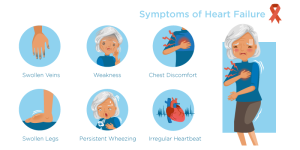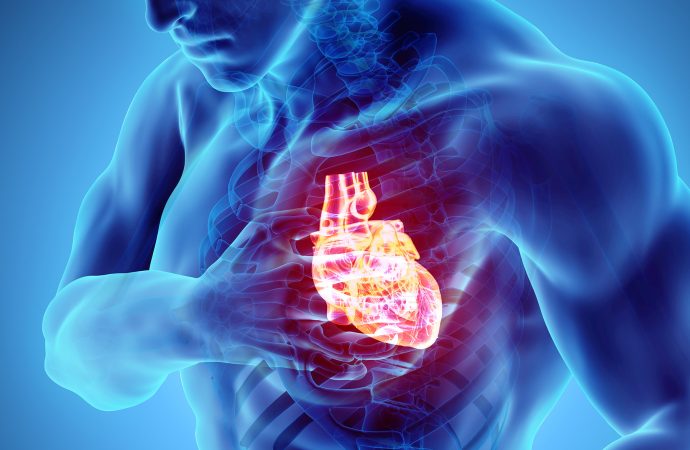Heart failure, a condition marked by the heart’s inability to pump enough blood to meet the body’s needs, is a serious health concern affecting millions worldwide. Despite advancements in medical science, heart failure continues to pose significant challenges, often due to late diagnosis or inadequate management of its indicators. In this comprehensive guide, we delve
Heart failure, a condition marked by the heart’s inability to pump enough blood to meet the body’s needs, is a serious health concern affecting millions worldwide. Despite advancements in medical science, heart failure continues to pose significant challenges, often due to late diagnosis or inadequate management of its indicators. In this comprehensive guide, we delve into the crucial warning signs and proactive measures to address heart failure indicators effectively.
Understanding Heart Failure
Before delving into the indicators, it’s essential to grasp the mechanics of heart failure. The heart, a muscular organ responsible for pumping blood throughout the body, may weaken or stiffen over time, impeding its ability to fill with and pump blood efficiently. This dysfunction leads to a cascade of symptoms affecting various body systems, compromising overall health and well-being.
Types of Heart Failure
Heart failure is classified into two main types: systolic and diastolic.
1. Systolic Heart Failure
In systolic heart failure, the heart’s ability to contract and pump blood effectively is impaired. This results in reduced ejection fraction, the amount of blood pumped out with each heartbeat, leading to decreased oxygen delivery to tissues.
2. Diastolic Heart Failure
Conversely, diastolic heart failure occurs when the heart’s ability to relax and fill with blood during the resting phase (diastole) is compromised. This leads to elevated pressures within the heart chambers, hindering proper blood flow.
Recognizing Key Indicators
Early detection of heart failure indicators is paramount for timely intervention and improved outcomes. While symptoms may vary among individuals, certain warning signs should prompt immediate medical evaluation.
Common Symptoms
1. Shortness of Breath (Dyspnea)
Experiencing difficulty breathing, especially during exertion or while lying flat, is a hallmark symptom of heart failure. This occurs due to fluid accumulation in the lungs, impairing oxygen exchange.
2. Fatigue and Weakness
Persistent fatigue and weakness, even with minimal physical activity, can indicate compromised cardiac function and reduced circulation, typical in heart failure.
3. Swelling (Edema)
Edema, or swelling, commonly manifests in the lower extremities, abdomen, or other areas due to fluid retention—a consequence of impaired blood flow and increased pressure within blood vessels.
4. Rapid or Irregular Heartbeat (Arrhythmia)
Heart rhythm abnormalities, such as palpitations, skipped beats, or a rapid pulse, may signal underlying heart dysfunction, necessitating prompt evaluation.
Less Common Signs
In addition to the primary symptoms mentioned above, certain less common indicators may also warrant attention:
- Persistent Cough: A chronic cough, often accompanied by white or pink-tinged sputum, can indicate fluid accumulation in the lungs.
- Reduced Exercise Tolerance: Difficulty performing routine activities without experiencing fatigue or breathlessness may indicate compromised cardiac function.
- Sudden Weight Gain: Unexplained weight gain, particularly over a short period, may signify fluid retention and worsening heart failure.

Image by: yendex.com
Taking Preventive Measures
While prompt recognition of symptoms is crucial, adopting preventive measures can mitigate the risk of heart failure and improve overall cardiovascular health.
Healthy Lifestyle Practices
1. Balanced Diet
Consuming a heart-healthy diet rich in fruits, vegetables, whole grains, lean proteins, and healthy fats can help manage blood pressure, cholesterol levels, and weight—all crucial factors in heart failure prevention.
2. Regular Exercise
Engaging in regular physical activity, as recommended by healthcare professionals, strengthens the heart muscle, improves circulation, and promotes overall cardiovascular health.
3. Weight Management
Maintaining a healthy weight through a combination of balanced nutrition and regular exercise reduces strain on the heart and lowers the risk of developing heart failure.
Routine Health Monitoring
1. Blood Pressure Management
Regular monitoring and management of blood pressure levels are essential in preventing hypertension, a significant risk factor for heart failure.
2. Cholesterol Control
Controlling cholesterol levels through dietary modifications, exercise, and medication, if necessary, reduces the risk of atherosclerosis and coronary artery disease, both precursors to heart failure.
3. Diabetes Management
Effectively managing diabetes through lifestyle modifications and medication, when indicated, helps prevent complications such as heart disease and reduces the likelihood of heart failure development.

Image by: yendex.com
Types of Heart Failure
| Criteria | Systolic Heart Failure | Diastolic Heart Failure |
|---|---|---|
| Definition | Impaired contraction and pumping of blood | Impaired relaxation and filling of blood |
| Ejection Fraction | Reduced | Often preserved |
| Common Symptoms | Shortness of breath, fatigue, swelling | Shortness of breath, fatigue, swelling |
| Treatment Approach | Medications, lifestyle changes, surgery | Medications, lifestyle changes, symptom management |
| Prognosis | Variable | Variable |
Conclusion
Addressing heart failure indicators requires a multifaceted approach encompassing early recognition, proactive management, and preventive measures. By understanding the warning signs, adopting a healthy lifestyle, and prioritizing routine health monitoring, individuals can reduce their risk of heart failure and enjoy optimal cardiovascular health.




















